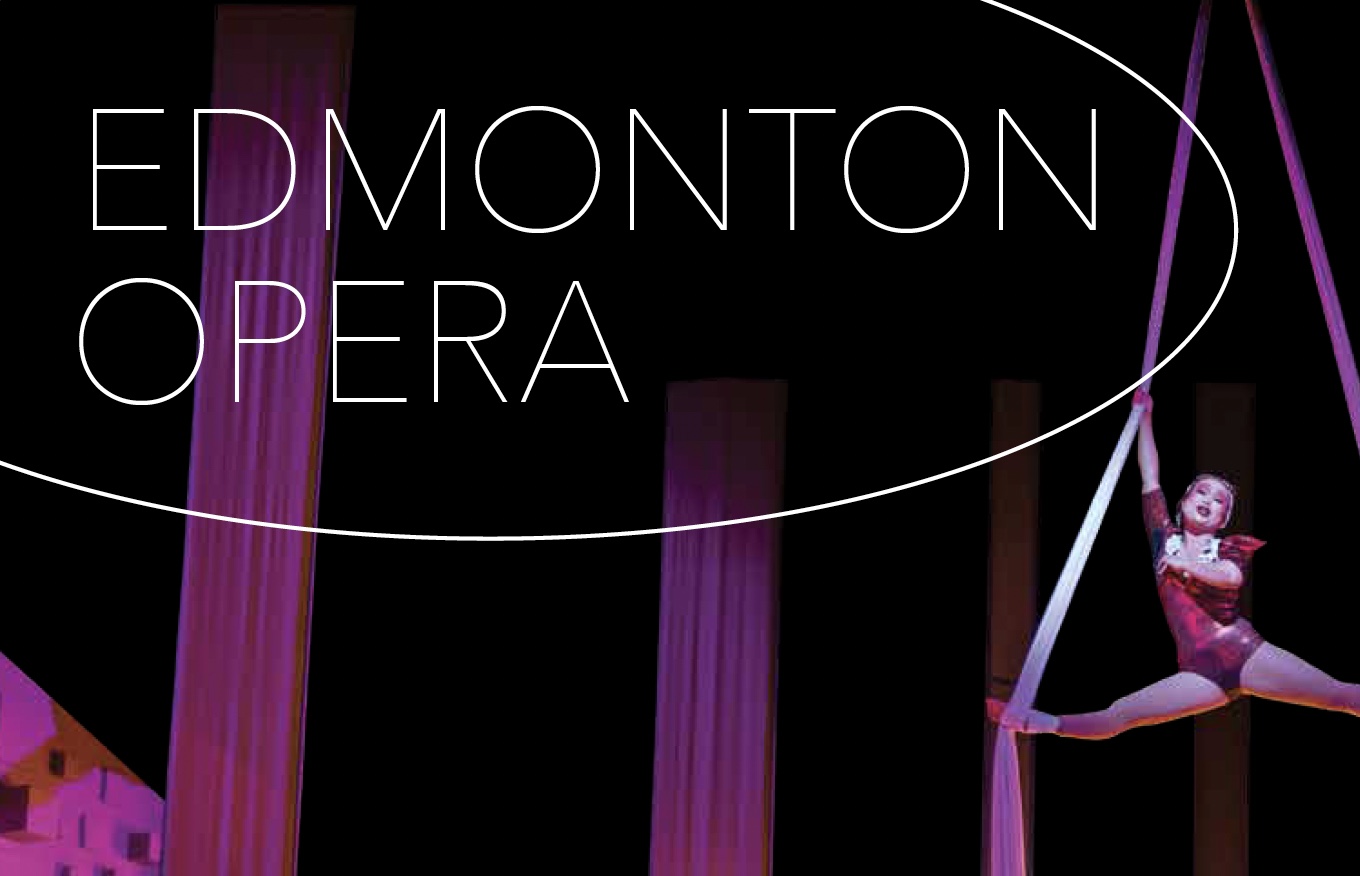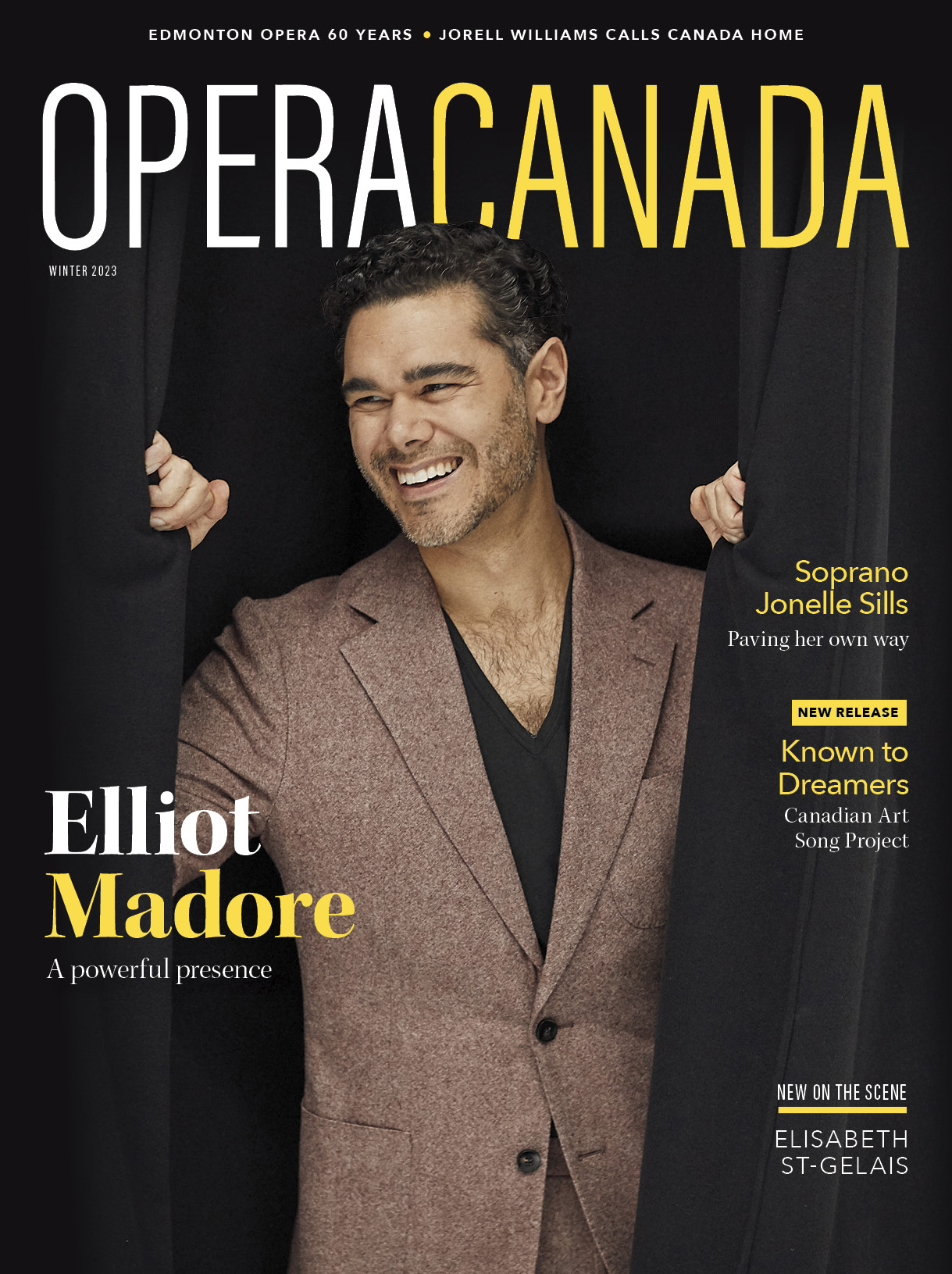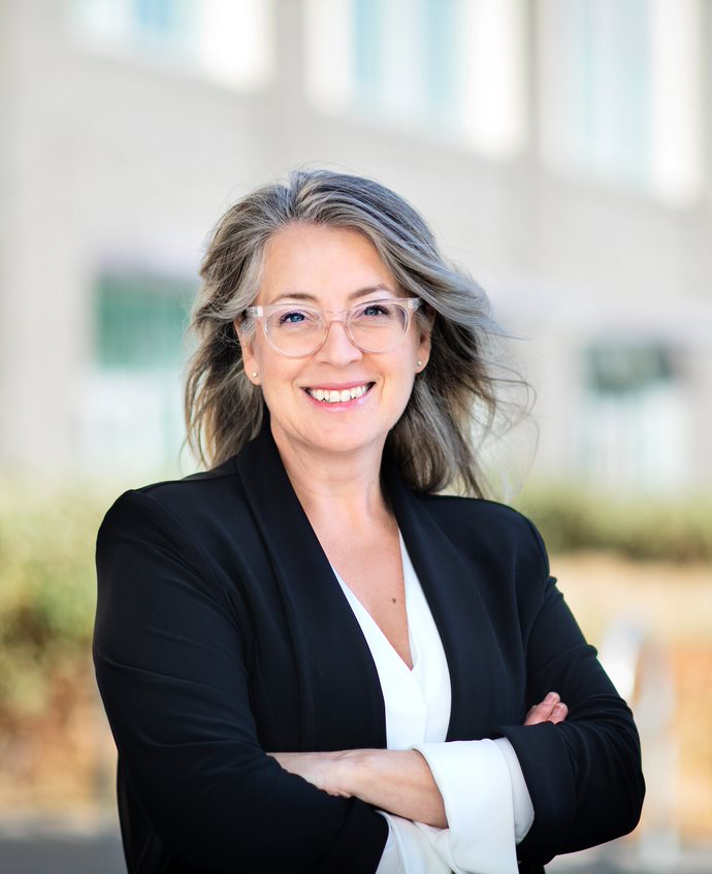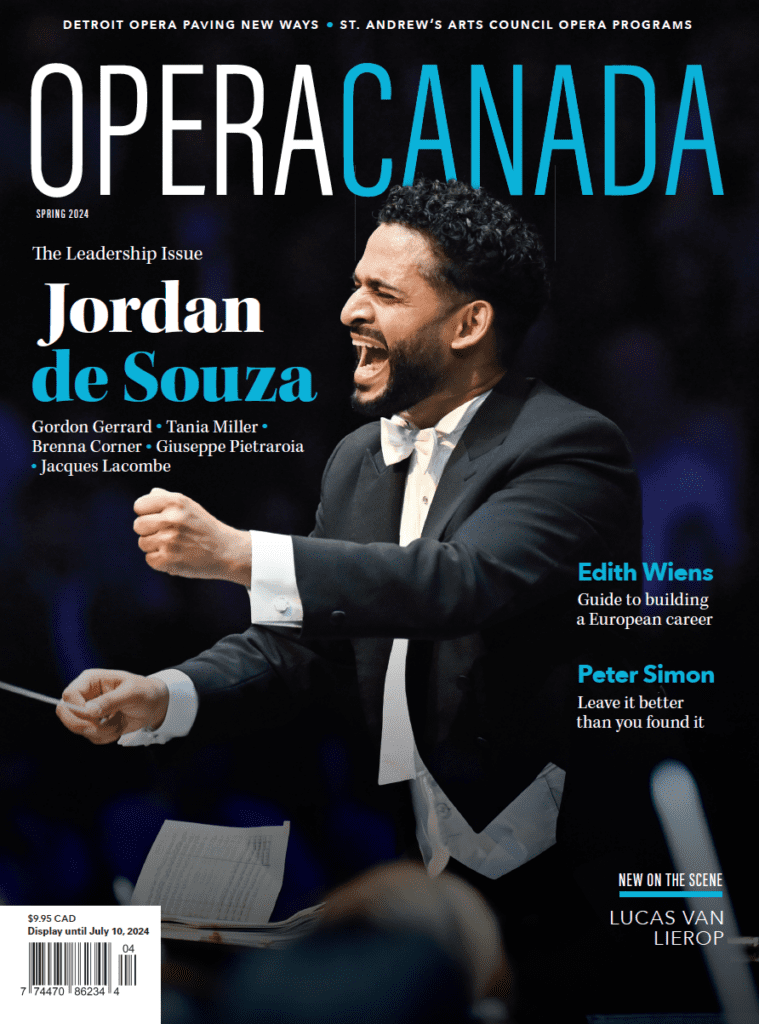SUBSCRIBE TO DIGITAL AND/OR PRINT MAGAZINE
*this text originally appeared in our
2023 winter print issue
Edmonton Opera 60 Years
In June 2022, Sue Fitzsimmons was announced as EO’s new Executive Director; she looks ahead in light of their big anniversary
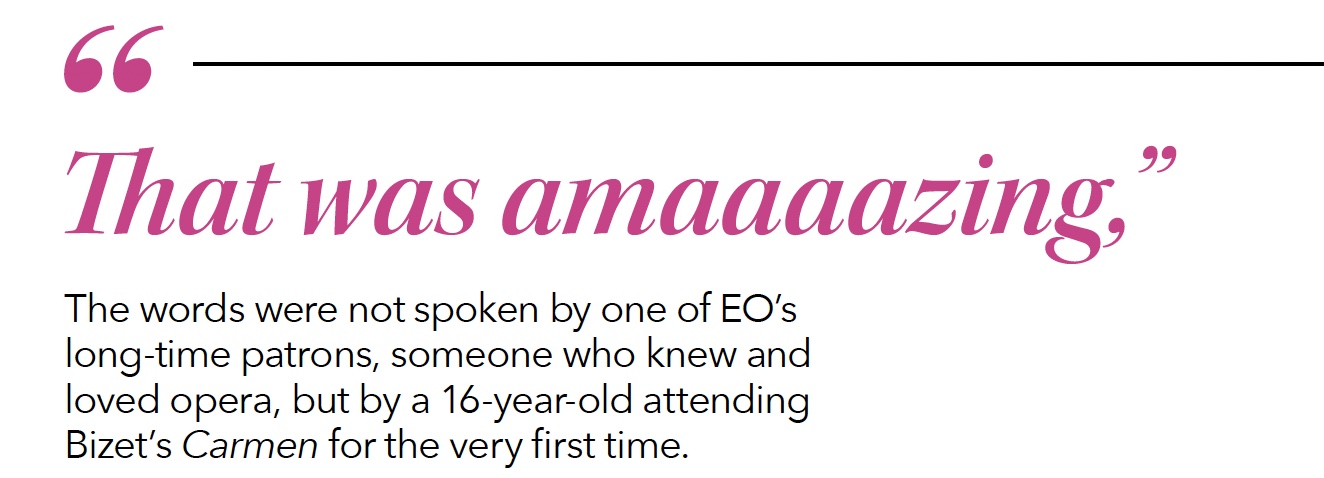
The word “amaaaazing” was drawn out and spoken softly, not at all like an exclamation one might normally expect from a teenager. Their sense of wonder was palpable. It gave me goosebumps, not only because the experience had such a powerful impact, but because that evening, many other youths, brand new to opera and attending as part of our 60th season youth-for-free initiative, shared similar sentiments with me.
The day prior, I had travelled with EO’s Music Director and conductor Simon Rivard to a local high school to work with a group of grade 11 and 12 band students. We were accompanied by head coach and repetiteur Frances Armstrong and 2 singers participating in EO’s emerging artist residency program: mezzo soprano Adanya Dunn and baritone Bruno Roy. At the school session, I watched these young, mid-career artists connect with the students. There was much laughter as each artist shared their journey to opera. The smiles on the students’ faces made it clear they could relate to these artists. These were people just like them, people not so far removed from the decisions high school students are confronted with, like choosing between playing hockey or playing music (Rivard) or turning down an opportunity for a dual engineering/business degree to pursue singing (Dunn).
When the question “Why opera?” was answered by a role-play between Dunn and Roy where the same scene was first acted out with dialogue alone, then with dialogue and a bit of song (as in musical theatre), and finally sung as opera, it was clear the students understood. And when the final note of Dunn and Roy’s duet faded away, and band teacher and saxophonist Jerrold Dubyk stepped in and quietly said, “You know how we say music can transform the room? That just transformed the room. Did you feel it?” the students murmured and nodded. It was clear they felt it too.
Later, the students performed a woodwind ensemble version of the Habanera, conducted by Rivard and sung by Dunn. Rivard and Dunn purposefully experimented with dynamics and tempo, urging the students to carefully watch and listen and adjust as needed. The students, who had never before accompanied a singer, rose to the occasion. Other teachers came in to watch. Opera became real, accessible, and relevant.
These 3 words—real, accessible, and relevant—are not the only words EO might use to describe our approach to opera in our next 60 years. They are not particularly sexy words, and they don’t have much of a “wow factor”. And engaging with youth – as many companies do – is not the only way EO is working to make opera more real, more accessible, and more relevant, particularly for those who have never experienced this incredible art form.
THE UNCERTAINTY OF “YES”
When I joined EO as Executive Director, I knew the company was writing a new chapter. I had spoken with Artistic Director Joel Ivany and was beginning to understand his vision for the company, and for opera more broadly. As the weeks and months progressed, I became increasingly excited about our future. I saw the rich and powerful threads of innovation begin to weave their way through our company.
What if we offer free opera for anyone under 21? Yes! What if we cast a silks aerialist and have her sing upside-down in one of the world’s oldest operas? Yes! What if we bring the audience through the backstage corridors of the auditorium and seat them on stage so they’re closer to the performers? Yes! What if we’re more purposeful in casting diverse voices and artists in our productions? Yes! What if we stage more intimate, pared-down versions of opera so people can experience the power of the operatic voice up close? Yes! What if we reimagine our facility needs and our approach to set design and construction? Yes! What if we help artists build a more comprehensive skillset that goes beyond the art? Yes! What if we perform one of the most wellknown Italian operas in English? Yes!
These are the kinds of questions we are asking. And the answer is (almost always) yes. It’s a wonderful (and sometimes terrifying) way of working. Because “yes” and the innovations this word represents comes with unknowns. Will the audience follow? Will our long-time patrons and donors approve? Will new creative and business processes work? Will our resources allow it? Will our partners innovate along with us? Will we manage to successfully prioritize among the many things we want to do?
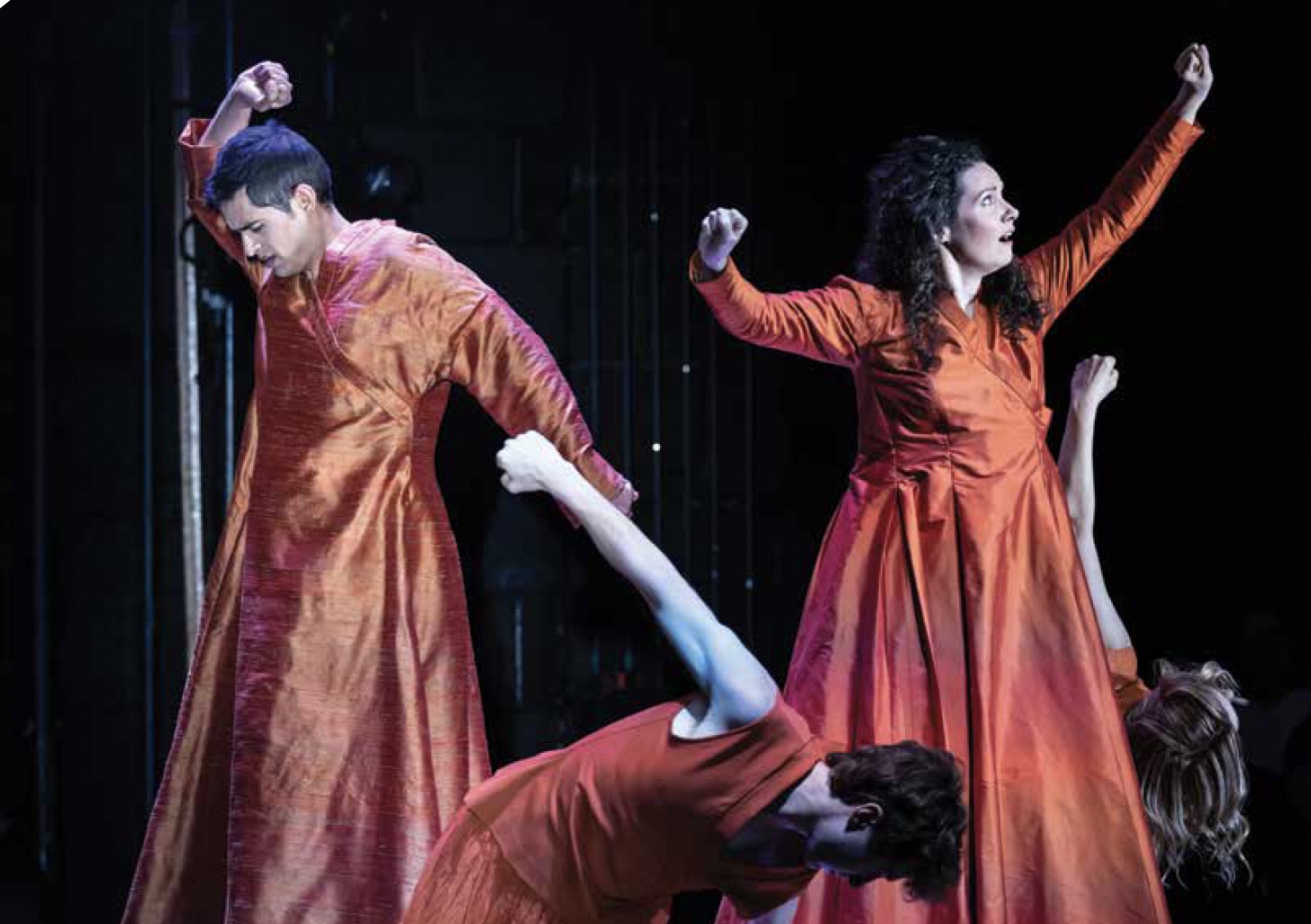
©Nanc Price
Edmonton Opera‘s of Pergolesi‘s Stabat Mater 2022/23; Magid EL-Bushra and Mireille Asselin
CONSTRAINTS AND OTHER PARADOXES
As we seek to change the nature of our company (and perhaps even the nature of opera), there are constraints to be dealt with. Like all creatives, we both welcome and curse these. Welcome because we know constraints provide the necessary conditions for creativity and change. Curse because, well, fewer constraints (particularly resource constraints) would make things so much easier!
As we contemplate the paradoxical nature of constraints, other paradoxes come to mind. Some of these are easier to manage than others, and we know that one way or another, they will define our next 60 years.
We feel both rich and poor. In some ways, we are in an enviable financial position, with ongoing operating grants, a strong donor base, loyal patrons, and an endowment that provides additional financial stability. At the same time, opera is an incredibly expensive art form and like other companies, we have had our share of challenges. Costs continue to increase for venues, insurance, transportation, and a host of other things. Audiences did not come back as quickly as anticipated. Operating grants are not keeping up with inflation and a growing number of companies are seeking to draw from the well of diminishing arts funding. There have been venue and facility challenges. And fees for creators, singers, instrumentalists, and designers must continue to increase if we are to appropriately support those who make our world a more thoughtful and joyful place.
We are both an established company and a start-up. We have 59 years of history behind us. As an established company, we have good relationships within the community including with patrons, donors, vendors, partners, and the unions who supply our talent. We have experienced team members who have been working in opera and the arts for many years. We know how to do what we do. At the same time, we are operating very much like a start-up. We have a very lean team. Cashflow is the name of the game. There are people in our city who have never heard of us. We are striving to innovate our approach to business and our approach to opera. We have new staff still learning the complexities of the opera business (me included). We are working to honour the traditions of opera while at the same time exploring its boundaries and embracing its evolution—all while we build our audience. We are iterating our operating and creative models as we work to incorporate more flexible, agile, and technology-supported approaches to everything from payroll to production.
We desire both tradition and innovation. At the 2022 Association of Opera in Canada summit, Ivany and I attended a session where smaller companies, perhaps more focused on new works, were invited to one side of the room and larger companies, perhaps more focused on producing grand, traditional opera, invited to the other. It was assumed these groupings would allow like-minded leaders to discuss shared desires and challenges. For EO, it was a little disorienting. Yes, we were committed to producing some grand, traditional opera each year, and at the same time, we were seeking to innovate everything from space creation to set design to storytelling. We felt pulled to be on both sides of the room at once, and the sense of belonging in neither camp was a little unsettling.
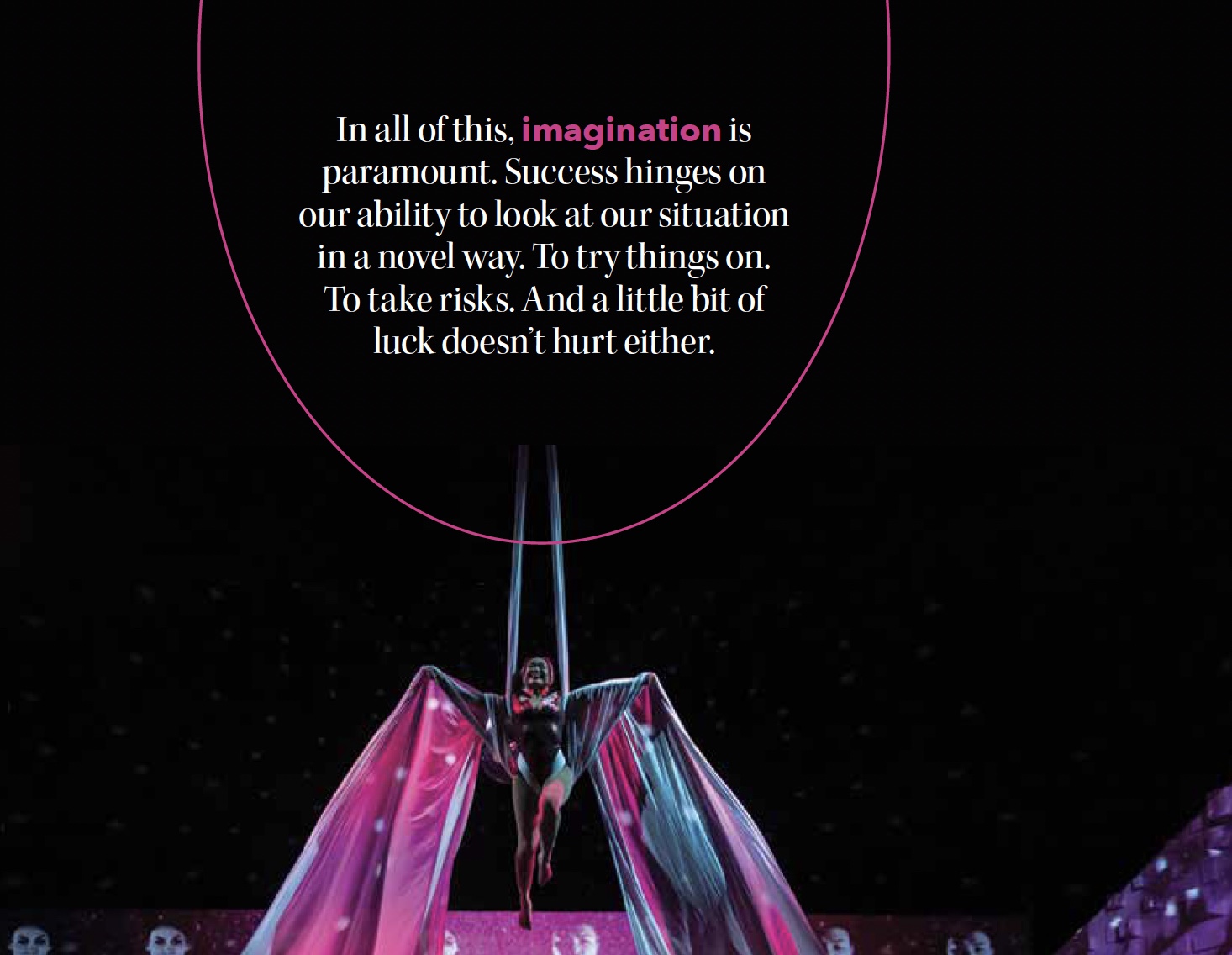
© Nanc Price
Edmonton Opera‘s Orphée+ with Shiman Chung (Orphée), Sharleen Joynt (Eurydice) and Etta Fung (Amour)
IMAGINATION BEYOND THE STAGE
Arts educator and philosopher Maxine Greene spent her career studying and promoting the value of the arts and aesthetic experience. In her book Releasing the Imagination, she wrote, “…of all our cognitive capacities, imagination is the one that permits us to give credence to alternative realities. It allows us to break with the taken for granted, to set aside familiar distinctions and definitions”. This is not news to those who create and perform. But it is sometimes an unfamiliar way of working on the business.
It takes courage and fortitude to break from traditional ways of operating. The leaps of faith required to step into new ways of doing things are not for the faint of heart and the pull to return to what has worked in the past can be strong. It takes time and money to innovate and reach new audiences and the returns, particularly financial returns, don’t generally materialize in only a year or two. There are bets to be made, with the knowledge some of these will be won and some will be lost. In all of this, imagination is paramount. Success hinges on our ability to look at our situation in a novel way. To try things on. To take risks. And a little bit of luck doesn’t hurt either. As EO board chair and former Canadian Armed Forces base commander Tom Bradley recently quipped, “Napoleon is reported to have said, ‘He may be good, but is he lucky?’” With a lot of imagination, and a little bit of luck, we are forging boldly ahead.
EMBRACING THE UNKNOWN
Like so many arts companies, EO continues to step into the unknown, and we recognize and embrace the opportunities this represents. Like the creative process that finds its way to the stage, we have a plan in mind, a willingness to discover what works, and our eyes wide open. We are fortunate to be prepared with many supports, a deep history to draw from, sound processes, and a talented, courageous team who embrace learning and innovation, led by our visionary artistic director, Joel Ivany. And, with a little bit of luck, we will look back in a few years’ time and softly say, “That was amaaaaazing.”

